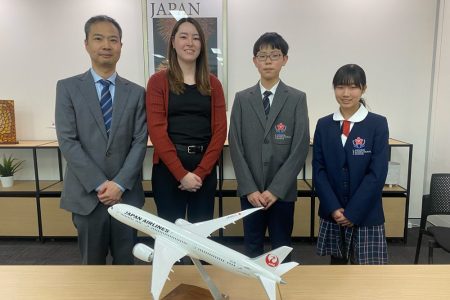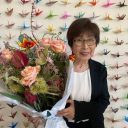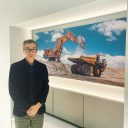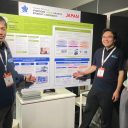Kentaro Yoshida
✕
MULGA
✕
Yoshinori Sakuno
In Conversation: Special Japanaroo Edition
This special feature sees Yoshinori Sakuno, the founder of doq®, in conversation with various business personalities. In this edition, he speaks to the artists behind the Japanese-Australian Japanaroo key designs: Mulga and Kentaro Yoshida.
(Editorial supervision, Photography : Kazuya Baba)
Due to ongoing COVID-19 restrictions in Greater Sydney, the Japanaroo 2021 event period has been extended from its original schedule and will now run from Friday 20 August to Saturday 2 October.
PROFILE
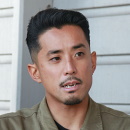
Kentaro Yoshida
Kentaro began work at a local advertising agency after studying visual communications at the University of Technology Sydney. Based in Sydney’s northern beaches, he has collaborated with numerous major companies and brands as a freelance illustrator and artist. He found himself in the spotlight for his wall art in the Japan Supernatural exhibition held in the NSW Art Gallery from the end of 2019 to 2020.
PROFILE

Mulga
Joel Moore (known as “Mulga”) is a street artist and illustrator residing in the south-Sydney suburb of Cronulla. He started his career as an artist in 2012 after retiring from his 14-year-long job in finance to devote his life to the craft. His vibrant creations have garnered attention from all around and he has become a buzzing member of the art community in the blink of an eye.
PROFILE

Yoshinori Sakuno
Yoshinori is the founder and group managing director of doq® who specialises in building enduring brands and the commercialisation of products into new markets. He was a finalist for three years running since 2016 for the Premier’s NSW Export Awards, won silver at the 2019 Sydney Design Awards, finalist for the Mumbrella Travel Marketing Awards, and the second ever Japanese finalist the Ethnic Business Awards.

YOSHINORI:The two of you have been featured on Nichigo Press before, but you may not be familiar to all of our readers. For the unacquainted, could you share some insights into your life growing up and living in Australia or Japan? Let’s start with you, Mulga.
MULGA:I was born in the Sutherland Shire in Sydney 39 years ago and am married with 3 kids. I’ve always liked art, but I didn’t think it was a good career choice, so I started out in finance. After studying economics at uni, I found myself working as a paraplanner for about 10 years. I didn’t really have a passion for it and didn’t see any future prospects, so when I was 30, I started taking art more seriously by starting a blog and putting my art up there. Then I started putting my art on T-shirts and going to markets. I liked drawing so that’s how I wanted to earn my living; that was my plan. My business grew enough that I was able to quit my day job after 2 years. I’ve been a full-time artist since 2014.
YOSHINORI:Finance and art are two very different fields. What drew you to finance to begin with?
MULGA:My dad was a carpet layer when I was growing up and working with him during the holidays was hard. I didn’t want to have a physical job. I do like the business side of things like building a company and building a brand, so I guess that’s why I got into finance.
YOSHINORI:How about you, Kentaro? Could you share the story of your life growing up in Japan and how you started your career?
KENTARO:I was born in the rural prefecture of Toyama in Japan and grew up there with my mum who’s a glass artist with a studio. I often drew Dragonball or other manga characters at her studio. That’s how I started drawing. When I was 18, my mum wanted me to go to Australia to learn English since I had no idea what to do after high school. I first came to study English, before I went to uni, and then got a job as a graphic designer. After that, I moved on to an advertising company and was there for 7.5 years as both a graphic designer and an art director. After circumstances made me decide that I need to make a change in my life, I focused on surfing and drawing in my spare time and continued it as my side job. It turned out okay so I decided to become a full-time freelance artist 2 years ago.
YOSHINORI:Speaking from experience, I find that advertising agencies in Australia are very creative. A lot of boutique agencies have received global awards, despite being small. Why do you think this is so?
KENTARO:I’m not exactly sure why, but I have noticed that people in the ad industry have a good work-life balance. They play hard on weekends and come into work with refreshed minds to get their tasks done. People also share insights into their lifestyles, which probably fosters creativity or ideas. Everyone just wants to get really good outcomes and they get the job done with their tough work ethic. A lot of people are like that, which I like and respect. It creates good team mentality.
YOSHINORI:Moving right along. Mulga, what was the turning point in your career as an artist considering your unconventional career path? Also, what contributed to enabling you to achieve what you have to date?
MULGA:My turning point was probably when I quit my day job. That was probably the biggest career step. What contributed to my achievements? One factor was I had a unit that I sold and started renting instead. The cash buffer helped with getting T-shirts and other products made without a looming debt. I think having the extra money to grow my merchandise business helped my career a lot.
YOSHINORI:As an artist, is it important to not have to worry too much about income so you can focus on being creative?
MULGA:If you want to make money, you have to think about it. If artists make their art more commercial or more appealing, they’d sell more, so I feel like that makes you think about doing better art. I’ve always been focused on how I can turn my art into an income. I think that’s why I like products. They’re useful. I like creating things that are useful for people to use as opposed to art on a wall. Sure, it’s good to look at, but I like the fact that you can use products in everyday life and they’re approachable.
YOSHINORI:So for you, it’s more about creating something attractive to consumers rather than expressing your artistic sense then?
MULGA:You can do both. When I first started out, I used to draw zombie characters. Now I mostly do animals. Everyone loves animals. If you draw something everyone loves in a cool way, appealing to the eye, it makes people happy and I like doing it as well. I just think that I’m the consumer, basically. I make a lot of products that I want to wear and use. It helps to have good taste and to be in touch with reality; to see what current trends are.
YOSHINORI:Kentaro, what was the turning point in your career and what contributed to enabling you to achieve what you have to date?
KENTARO:I mentioned it earlier, but circumstances led me to make a change in my life. When I turned 30, I thought it would be too late to jump into the Sydney art scene, but it wasn’t. Like Mulga, I also had a full-time job with average pay, but that meant I didn’t have to worry about my living expenses so I didn’t choose projects I didn’t want to do. Thankfully, I managed to make it work. I think that’s how I progressed my career. I don’t think I’m successful yet. It really is hard getting paid for drawings, so I’m really grateful that I have clients.

YOSHINORI:I’d like you two to be very honest. What’s your dream?
MULGA:My life dream is to be able to walk to the surf. I want to have a house that’s walking distance to Cronulla beach.
YOSHINORI:What’s your dream, Kentaro?
KENTARO:My dream was actually to go overseas to work more. I was really hoping to do so before COVID hit. I have to adjust my dream now [because of COVID], but it’s slowly happening.
YOSHINORI:Can you share with us the most challenging thing you’ve ever had to face in your life or career?
MULGA:I released a kid’s picture book. That was pretty challenging because the illustrations were a lot more complex to the art I was creating at that stage. It was a long process but it was worth it in the end, it’s called Mulga’s Magical Musical Creatures.
YOSHINORI:What about you, Kentaro? What was the most challenging thing in your career or your life?
KENTARO:I think jumping into doing art full time was pretty challenging psychologically and in terms of pressure. Also, the biggest project in my career was the one for the NSW Art Gallery. That was really challenging because I had limited time to paint. It was a good experience, but it was physically hard when it came to time management.

YOSHINORI:We saw you both as being perfect partners to collaborate because of you share common artistic directions. What did you guys think? Do you have any similarities in your work?
MULGA:You’ll be way more successful if you follow your passion. You’ll try harder. You’ll do better work. It happened for me.
YOSHINORI:Mulga you have business partners in Japan and your products are selling over there in department stores. You also have projects in Japan. From your point of view, what are the differences in creative work and culture between Japan and Australia?
MULGA:My business partners are culturally Japanese people in that they’re very trustworthy and follow the rules. I don’t know if that’s a difference or not, though. It’s good having business partners who you can trust and treat you with respect.
YOSHINORI:Did you notice any differences in creative work between Australia and Japan?
MULGA:I don’t know. It’s basically just my artwork and licensing, so I don’t know if I have much to do with Japanese creativeness. It’s just my creative work and collaborating with brands there.
YOSHINORI:What’s the reason Japanese consumers love your artwork?
MULGA:It might be something to do with my artwork being kind of quirky, bright, colourful and happy. When I’m painting, lots of people will be like “kawaii” (cute). It’s kind of playful, fun, and a bit silly. I think Japanese culture likes that.
YOSHINORI:What about you, Kentaro? What do you think about the differences in creative work between Japan and Australia?
KENTARO:I’m not sure about how things are in Japan, but I think I’m better off sticking around in Australia and working here because I’m seen as Aussie because of how I behave. I think that makes [my work] more buyable here than in Japan. With more of a career or more projects here, I’ve been gradually attracting Japanese consumers, though.
YOSHINORI:I’d now like to talk about Japanaroo. First of all, thank you very much for your collaborative work. A lot of people like the logo and key visuals you guys have created. Can you tell us what you think of the Japanaroo initiative?
MULGA:It’s pretty cool. Definitely. I think Australians love Japan. They love the culture, visiting Japan, skiing in Japan, and the food’s great. It’s a good idea to push it more.
KENTARO:It’s good timing because of COVID. People can’t actually visit Japan [right now], so Australians can have the opportunity to experience it here.
YOSHINORI:How was collaborating together to create the Japanaroo logo and key visuals?
MULGA:It was good. I’m glad I was working with Kentaro because he’s a professional. It’d be very hard if it was me on my own. I don’t have a graphic design background. I draw offline with Posca paint markers and scan it in.
KENTARO:I think it worked out well for us. We both know what we’re both capable of— allocating roles, that kind of thing.
YOSHINORI:Can you offer some more details about your work process?
KENTARO:We basically just brainstormed and picked key words from Australia and Japan. It was a super-flexible, spontaneous process. With my graphic design background, I could put our drawings together for delivery. We worked efficiently.
MULGA:I’ve admired Kentaro’s work for a while, so it’s been pretty cool to work with him.
KENTARO:Same! It felt like we’d met a few times before through social media and the small art community. I definitely talked to him through messages in the past, but not face-to-face.
MULGA:I don’t do many collaborations; I think they can potentially be hard if you have two creative people trying to work together because egos are involved. I think it helps to be chilled about it.
YOSHINORI:We saw you two as being a perfect collaboration because of your similar directions. What did you guys think? Do you have any work similarities?
MULGA:For sure. If you look at our lines, we both do black lines. Also a lot of illustrative details.
KENTARO:When I was handling files from him. I noticed some details were hidden that you’d only see up close on a screen. Like little hidden techniques. It was fun to find this.
YOSHINORI:What differences did you notice between each other?
MULGA:I know Kentaro does it digitally, where as I use Posca paint markers. That’s a big difference.
KENTARO:Whenever I need digital art files, I just use my iPad or work in Photoshop. But he creates everything by hand and scans them in.
YOSHINORI:The logo and key visuals were officially announced recently. Do you have any regrets or points you want to improve with your work?
MULGA:No, it’s perfect. I wouldn’t change a thing.
KENTARO:I think I was asked last week for more Japanese elements in the key visuals and logos. I didn’t even think about it, but it was more on the Australian side. Maybe I should’ve pushed the Japanese elements a bit more. Maybe it’s not too late (laughs). It was really fun.

YOSHINORI:Do you have any advice for our Nichigo Press readers regarding career development, especially between Japan and Australia?
MULGA:In terms of general life advice—you only live once, so follow your dreams. When I did it, I started small. Follow your hobbies; your dreams. Try and think of different ways you can turn it into your career.
YOSHINORI:What if they don’t have the courage to take the first step?
MULGA:Just start small. Do it because you love it.
YOSHINORI:That’s great advice. What about you Kentaro?
KENTARO:I can offer some advice to young creatives. I really think if you want to do something of your own, just think about it in your own way. It all comes from you—your ideas, experiences, or memories. I think that’s very important in this era.
YOSHINORI:Thank you both today for your time and the inspirational conversation.
